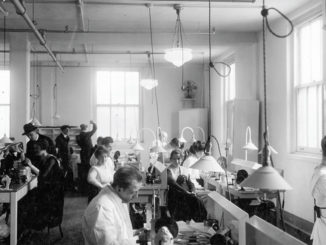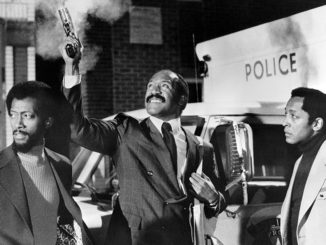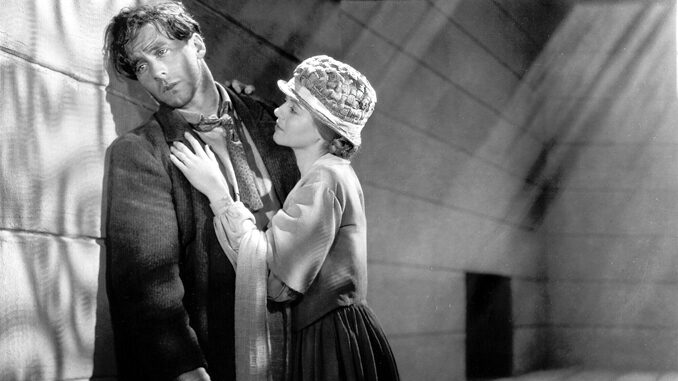
by Edward Landler
Of the many crafts essential to making movies, only editing came into existence because of the medium itself. Cinematography grew out of photography. Art direction grew out of theatrical design. Sound recording existed independently for decades before its marriage to the moving image. But film editing is a technical and aesthetic craft unique to the motion picture.
Editing, though, has always had a hard time getting proper recognition for its part in the filmmaking process. This goes back to the earliest days of Hollywood when editors were named in then-minimal title credits far less often than other below-the-line personnel. As the length of opening credits grew, editors only found their way into them slowly.
This non-recognition continued into the founding of the Academy of Motion Picture Arts and Sciences and their awards for cinematic achievement. The first six years of Oscar consideration — from mid-1927 through 1933
— included no Best Editing category. (Sound recording, however, was first awarded at the third Oscar ceremony.)
To somewhat rectify this six-year snub, CineMontage hereby proposes a suggested slate of pictures and editors that could have been considered for outstanding achievement in editing, if the category had existed. More than acknowledging those whose work was overlooked, this should also bring attention to the editors who helped shape the classic structures of movie storytelling.

On May 16, 1929, the Academy, honoring films released between August 1927 through July 1928, bestowed its first Oscar for Outstanding Picture (the forerunner of the current Best Picture category) on William Wellman’s World War I aviation film Wings (1927). If the editing category existed, its “editor-in-chief” E. Lloyd Shelton would have been nominated — if only for his expert cutting of the dogfight sequences vividly conveying the excitement of flying combat.
That year, for the only time, an Oscar for Unique and Artistic Picture was also given — to German director F.W. Murnau’s first American film, Sunrise (1927). Editor Harold D. Schuster’s work should have gotten attention for his delicate assembly of this story of a Central European farm couple’s marital crisis. His editing of the young couple’s trip via rowboat and streetcar from rural setting to big city early in the film foreshadows the elements comprising the emotional impact of the ending.
King Vidor’s intimate epic of the ordinary American working stiff, The Crowd (1928), was also nominated for Unique and Artistic Picture, and the wonderfully named Hugh Wynn could very well have received the top editing honors, if there were any. In The Crowd, he dramatically incorporated striking editing elements drawn from Soviet and German cinema to establish characters in their real environments.
With that in mind, two powerful examples of those European experiments in montage should have been acknowledged: V.I. Pudovkin’s The End of St. Petersburg (1927), depicting the fall of the czarist regime from the point of view of the working class, and Walter Ruttmann’s groundbreaking documentary, Berlin: Symphony of a Great City (1927). The directors did their own editing on these films.

Finally, representing a high point of American silent comedy, Sherman Kell’s precise timing and tight matching of physical detail in Buster Keaton’s Steamboat Bill, Jr. (1928) deserves recognition. His editing of Keaton, making his way to rescue his father, girlfriend and steamboat while a cyclone plows through a Mississippi River town, simultaneously heightens the thrills and the comedy.
The second Academy Awards ceremony was held on April 3, 1930, for movies released from August 1928 through July 1929. For the first time, the top Oscar was given to a sound film, The Broadway Melody (1929), but almost all the sound films released up to then were mired down by bulky sound equipment and theatrical readings of dialogue. Their picture editing appears clunky and leaden in contrast to the fluidity seen in the eligibility period’s silent releases.
The Crowd’s Wynn once again would have merited an Oscar nod for his narrative pace and careful cutting around nuances of physical action in what may be Greta Garbo’s best silent film, A Woman of Affairs (1928).
Working on The Wind (1928), a collaboration between director Victor Sjöström and actress Lillian Gish, Conrad A. Nervig strikes an arresting balance between grand views of the West Texas plains and taut analytic editing within claustrophobic ranch dwellings beset by wind- driven sands. Nervig would go on to win the first editing Oscar at the 1935 ceremony for Eskimo (1934) and another in 1951 for King Solomon’s Mines (1950), but remains unacknowledged for The Wind.
Helen Lewis’ understated elliptical editing of Josef von Sternberg’s The Docks of New York (1928), subtly suggesting characters’ emotions from point-of-view shots, is another high- water mark for this last phase of editing in American silents, and one worthy of recognition.
Three European silent films released in the US during 1928-29 should also be included among the deserving. Sergei Eisenstein’s re-creation of the Bolshevik Revolution, October (1928), edited by the director with the assistance of Esfir Tobak, virtually embodies all of the director’s theories of deriving meaning and emotion from “collisions” of images.
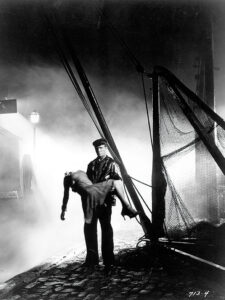
The five-hour Napoléon (1927), edited by its director Abel Gance, further expands the use of quick cutting with a dense interweaving of mobile and handheld camera work along with stationary shots. Meanwhile, Carl Dreyer’s The Passion of Joan of Arc (1928), condensing the trial leading to Joan’s burning at the stake, moves forward with an intensity founded on the interaction of close-ups that dominate the majority of its screen time. Dreyer edited the film with Marguerite Beaugé, who had worked with Gance on the four-and-a-half-hour- long La Roue (1923), an earlier exercise in rapid cutting.
For the third Academy Awards ceremony on November 5, 1930 — recognizing releases from August 1929 through July 1930 — editor Wynn would have garnered a third editing nomination for his work on Vidor’s movie about Black sharecroppers, Hallelujah! (1929). Wynn’s manipulation of documentary-style footage of cotton farming and more stylized depictions of Black life pioneered the smoother integration of sound technology with a mobile camera.
Breaking similar ground on a grander scale and incorporating elements of silent-style montage, the more likely winner for editing would have been Edgar Adams for the year’s Outstanding Production (formerly Outstanding Picture) winner, All Quiet on the Western Front (1930).
A third solid contender for editing honors would have been director William Wyler’s Western Hell’s Heroes (1929). Emphasizing the characters’ placement in the searing Mojave Desert terrain, supervising film editor Del Andrews and editor Harry Marker introduce an interior psychological element through editing and distorting sound near the end of this tale of three doomed outlaws carrying a newborn baby to civilization and safety.
Along with these sound films, two films representing a culmination of the Russian and German approaches to silent editing should have been considered. In director/editor Friedrich Ermler’s Fragment of an Empire (1929), an incident in a Russian train station triggers a World War I veteran’s recovery of lost memory with a stunning kaleidoscopic montage of images from his past. This establishes a dynamic editing pace that drives the amnesiac’s return home after 10 years to St. Petersburg, renamed Leningrad after the Revolution. In G.W. Pabst’s Pandora’s Box (1929), editor Joseph Fleisler seamlessly cuts on movements, point-of-view shots and details of tactile images to evoke a dense texture of emotions. This “invisible” flow of images metaphorically tracks the journey of Louise Brooks’ amoral Lulu as she rises and falls in a corrupt society.
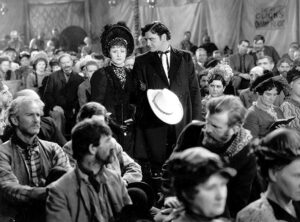
On November 10, 1931, the fourth Academy Awards ceremony was held for films released from August 1930 through July 1931. RKO’s Western Cimarron (1931), directed by Wesley Ruggles, was the first movie to be nominated in seven categories and it won three awards, including Outstanding Production. If an Oscar for editing existed, William Hamilton would have been nominated, too — if only for the rousing Oklahoma Land Rush sequence incorporating footage shot over five days by 28 cameras.
Lewis Milestone’s adaptation of The Front Page (1931) was also up for the top award and W. Duncan Mansfield’s editing would also have been singled out. Mansfield started editing in 1918 for producer Thomas Ince and, in 1921, edited Henry King’s Tol’able David, a landmark film that refined D.W. Griffith’s editing techniques to their peak of development. In The Front Page, he boldly uses sound as counterpoint to intricately cut material while also smoothly intercutting stationary and moving shots.
Two other movies deserving Oscar consideration that year helped establish the editing styles of their respective genres. Gangster movies assimilated Edward M. McDermott’s careful yet urgent sense of pacing in William Wellman’s The Public Enemy (1931), which consistently underscores the cause-and-effect logic of Tom Powers’ (James Cagney) rise and fall in big city crime. From the opening sequence of Tom’s boyhood, an editing pattern based on characters’ reactions keeps attention focused. Similarly, later horror films drew from the eerie cutting style of the first 20 minutes of Universal’s Dracula (1931), directed by Tod Browning and edited by Milton Carruth. After Dracula reaches London, the stage origins of the film’s script turns the editing sluggish, but the creepily measured opening of the film in Transylvania — with Renfield encountering Dracula, his ghastly brides, rats and armadillos — still evokes chilly dread.
An Oscar nomination would also have been due for an early film musical successfully integrating image and sound: the French movie about an artist’s lost lottery ticket, Le Million (1931), directed by René Clair and edited by René LeHenaff. Their second sound film together, Le Million uses witty and ironic cross-cutting under its songs and playfully marks passages of time with dissolves and fast-motion photography.
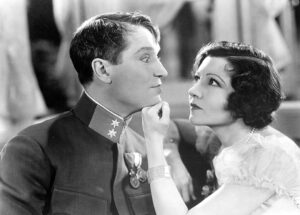
For the fifth Oscars on November 18, 1932 — honoring films released from August 1931 through July 1932 — an American musical nominated for top production honors would have gotten a nod for best editing: Ernst Lubitsch’s third musical, The Smiling Lieutenant (1931), edited by Merrill G. White. The movie’s best musical number, “Jazz Up Your Lingerie,” is jazzed up with a montage sequence of an experienced Claudette Colbert giving Miriam Hopkins’ naïve princess a complete makeover to keep prince consort Maurice Chevalier interested in her.
Another nominee for Outstanding Production in line for an editing award would have been Josef von Sternberg’s exotic love story set in war-torn China, Shanghai Express (1932) with Marlene Dietrich. William Hamilton’s cutting rhythms, built around the title train’s movement and shifting chiaroscuro patterns of light and dark, strongly reflect the story’s emotional conflicts.
The most sophisticated editing of the year, though, was William Shea’s work on Rouben Mamoulian’s adaptation of Dr. Jekyll and Mr. Hyde (1931). Fredric March’s transformations are still remarkable as is a long bravura sequence from Dr. Jekyll’s point of view leading to the audience’s first view of the good doctor. Shea also plays with scene transitions, even diagonally wiping a corner of the frame to slowly reveal the next scene.
Two other possible contenders that year highlight editors’ increasing facility with sound. A Western based on the Wyatt Earp legend, Law and Order (1932), edited by Editors Guild co-founder Philip Cahn and directed by his younger brother Edward L. Cahn, features a dynamic gunfight at the OK Corral with the action heightened by cutting to the reactions of terrified horses. Earlier, telling close-ups of spectators complete the depiction of the town of Tombstone’s first legal hanging. Meanwhile, the title of Mervyn LeRoy’s Two Seconds (1932) refers to the time Edward G. Robinson has left to live in the electric chair once the switch is pulled. Terry Morse’s editing of the movie’s extended flashback of Robinson’s life in those two seconds is punctuated by imaginative and striking transitions between scenes moving the action forward while hinting at his fate.
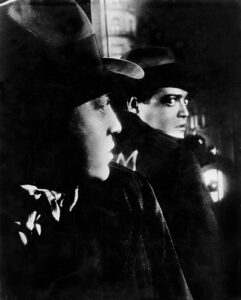
Any consideration of editing for the sixth Annual Awards, given out on March 16, 1934 (for movies released between August 1932 and December 1933), must include Paul Falkenberg’s pioneering work on Fritz Lang’s first sound film, M (1931), starring Peter Lorre as a serial child killer. Produced in Germany and not released in the US until March 1933, its exploration of urban society introduced a wealth of editing techniques in relation to sound, including uses of voiceovers, pre-lapping and post-lapping — decades before they were seen in other films.
A nomination again would have gone to editor William Shea, working once more with director Mamoulian, this time on a musical, Love Me Tonight (1932). Blending a visual rhythm with song, the “Symphony of Paris” sequence orchestrates the sounds of the city while Maurice Chevalier leads us to his tailor shop. A bit later, the editing carries “Isn’t It Romantic” out of the tailor shop via a series of characters through taxi, train and gypsy caravan to countess Jeanette MacDonald’s chateau in the countryside.
George Amy’s seamless cutting of Busby Berkeley’s spectacular choreography spreading way beyond its supposed theatre stage limits in Footlight Parade (1933) would also have earned a nod. Amy later won an editing Oscar for his work on Howard Hawks’ Air Force (1943).
W. Duncan Mansfield’s editing of the first sound version of Somerset Maugham’s story Rain (1932), reuniting him with director Milestone, would also demand Oscar attention for its evocative montages of tropical monsoons and its stunning five- shot introduction of Joan Crawford’s Sadie Thompson, redone with dramatic irony at the film’s end.
And finally, the emotional observation and sharp clarity of Guild co-founder Ben Lewis’ editing of the multiple plots of the all-star story in George Cukor’s Dinner at Eight (1933) would have rounded out this slate of nominees.
Unfortunately missing from this list is Ernst Lubitsch’s Trouble in Paradise (1932). Its juxtapositions of images, rife with knowing implications, create rhythms that drive the pace of its romantic entanglements, and would qualify its unknown editor for Oscar attention. Yet, five years after the introduction of sound, as with many movies produced before the Society of Motion Picture Film Editors’ founding (1937), there was no credit for editing.
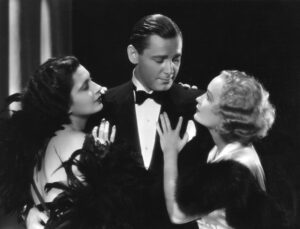
If indeed editing’s role had been recognized in Oscar’s first six years, then certainly the Academy would also have noted its importance by considering editors, along with other industry professionals, for honorary Oscars.
One such honorary Oscar should have gone to the husband- and-wife team of Jimmy and Rose Smith for their contributions to the establishment of the editing craft in Hollywood. They helped to develop the editing techniques attributed to Griffith that became standard editing practice for the entire industry. Jimmy started cutting shorts for Griffith in 1909 and Rose started editing for him in 1914. The Smiths married while working on Intolerance (1916), the director’s epic interweaving of four stories from four different periods of history. They worked together on most of Griffith’s features including The Birth of a Nation (1915), Way Down East (1920) and Orphans of the Storm (1921). After their time with Griffith, they continued to edit for other directors — separately.
A second honorary Oscar could have gone to Richard Currier, Hal Roach Studio’s head of editing from 1920 to 1932. He was credited for editing the vast majority of Roach comedy shorts, including those featuring Our Gang, Charley Chase, and Laurel and Hardy. Among the 40 or so two-reelers he cut for Laurel and Hardy are a handful of comic editing gems like Wrong Again (1929), Big Business (1929), Hog Wild (1930) and The Music Box (1932). Moving on to editing features and TV, Currier is the perfect example of a consistently fine craftsman capable of greatness when the material is there.
Of course, none of these Academy Award nominations for editing were made and none of these Oscars were presented. As a result, we have lost what might have been a valuable record of how industry professionals regarded both editors and the evolution of editing styles from the silent era through the sound revolution. Nevertheless, many of the films these editors worked on survive — to be viewed, enjoyed and evaluated for their achievement and influence.




